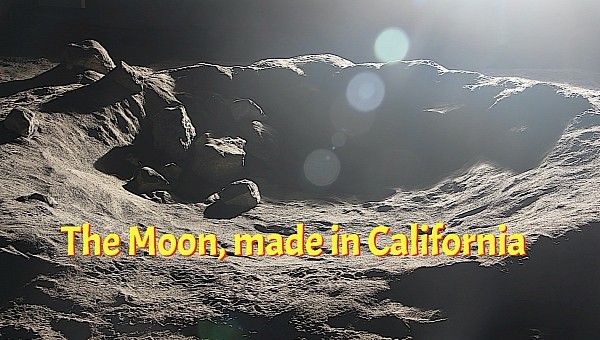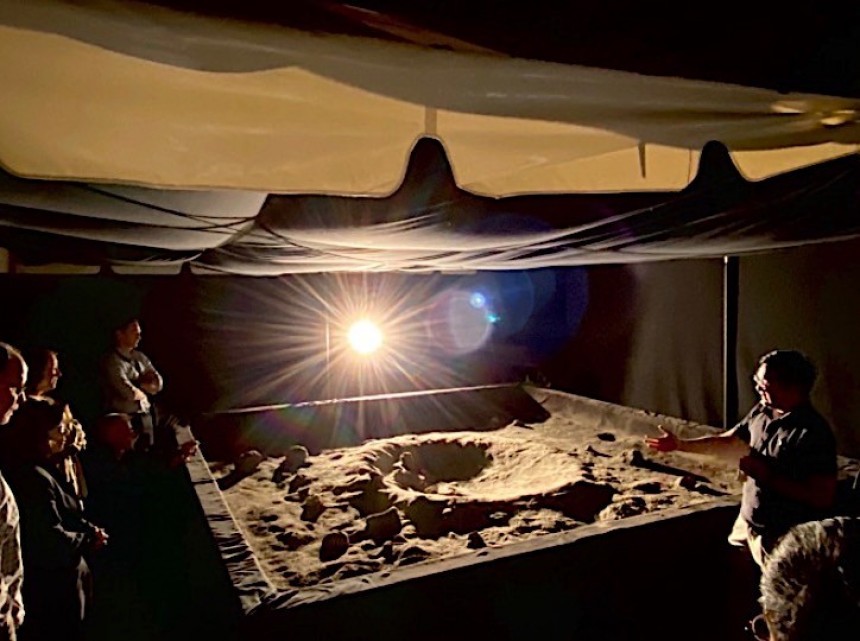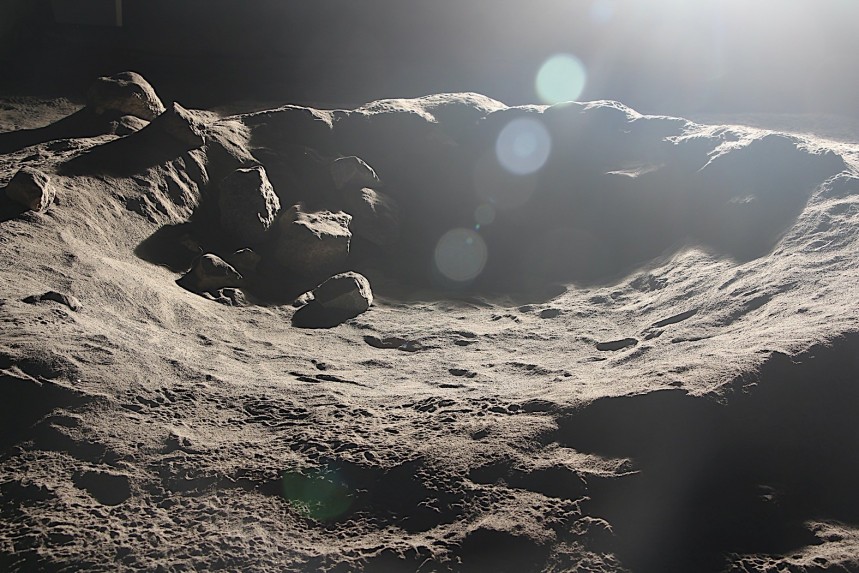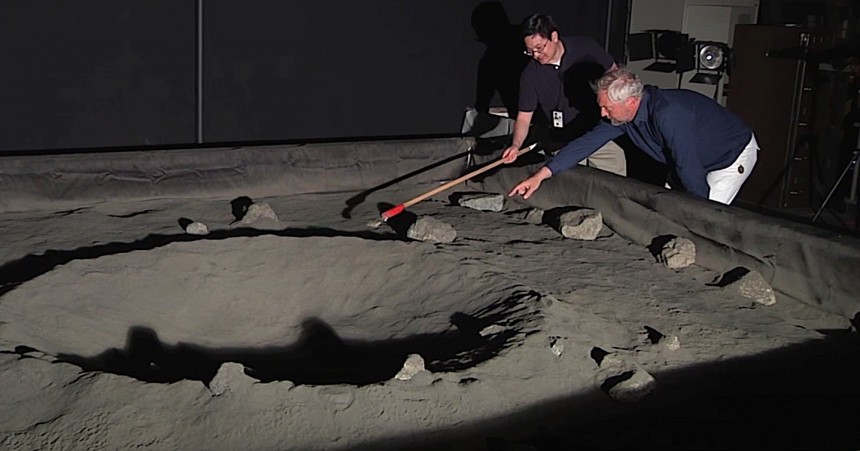With any luck, and provided we don’t blow ourselves to smithereens anytime soon, 2025 will bring with it the Artemis III mission, and a human return to the Moon after more than half a century.
The first mission of the program, Artemis I, has already concluded and, despite being extremely complicated to put together and execute, it was a walk in the park compared to what’s to come. That’s because humans and new, never-before-used technologies will be involved, and the complexities of making everything fit and work as it should are simply mind-boggling.
Like with everything else it does, NASA is trying its best to cover every contingency and ensure the success of the Artemis III mission, but also of the other ones planned before and after it. And one of the tools it uses to do this is the so-called Lunar Lab and Regolith Testbed.
The idea of a place where the surface of the Moon can be simulated and various technologies can be put to the test came to be long before NASA knew it would certainly go back up there. Back in 2009, a partnership between the Solar System Exploration Research Virtual Institute and the California Space Authority gave birth to the Testbed, located ever since at the Ames Research Center in California.
The Testbed is perhaps the most low-tech of all NASA facilities. It basically comprises a couple of sandboxes and a bunch of powerful lights, and that’s about it. But that’s quite understandable, if you think about it: the Moon is low-tech too, yet potentially deadly, so we need to be prepared for it.
Two Not-So-Giant Sandboxes
The most important elements of the facility are the two sandboxes. These are the tools scientists use to recreate the surface of the Moon and test various rovers and other technologies.
The first box is filled with something called Johnson Space Center One simulant. JSC-1A for short, it is a “high friction, high stiffness soil” made from crushed basaltic ash. Eight tons of the stuff occupy an area no bigger than 13 feet by 13 feet by 1.5 feet (4 meters by 4 meters by 0.5 meters), making this the largest collection of the stuff anywhere in the world.
The second sandbox contains something called Lunar Highlands Simulant-1. It too has an acronym, namely LHS-1, and it’s a mineral-based type of dust you yourself can buy for as low as $45 per kilo. There are 20 tons of the stuff inside a box larger than the first, measuring 62 feet by 13 feet by 1 foot (19 meters by 4 meters by 0.3 meters). This box is sort of modular and can be configured to cover a smaller area but also become deeper.
With these two kinds of dust, NASA says it can simulate most areas of the Moon with a high degree of accuracy: JSC-1A for the satellite’s mare basins (the remnants of lava flows), and LHS-1 for the lunar highlands, which are basically the plains on the Moon’s surface.
The two types of simulants seem to be doing a great job at mimicking the fine and sharp stuff that can be found for real on the surface of the Moon, and because of that, it has been the go-to place for scientists and engineers in need of testing something.
Depending on the technology in need of tests, but also on the region of the Moon meant to be simulated, the sand in the boxes can be reshaped to whatever type of surface one desires. To do this, NASA people do not employ high-tech gizmos or lasers, but their own hands and hand tools. With this low-tech approach, they can shape pits, craters, and plains, but they can also add stuff like rocks and other obstacles.
The sandboxes may recreate the surface of the Moon, but a series of high-power lights are what set the mood. They are meant to replicate the light coming from the Sun and falling over the desolate landscape.
What Does the Testbed Do for Artemis
The Apollo Moon missions of the 1960s and 1970s all landed in the central part of the Moon facing our planet. Artemis astronauts however will be landing at the South Pole, and conditions there are extremely different than what Neil Armstrong & Co encountered.
Not only is the terrain there different, but light falls at weirder, hard-to-grasp angles. The position of the satellite in relation with the Earth and Sun means light hits the South Pole at a very low angle. This causes more or less of an eternal night there, with no sunrise, ever, but still with enough light for every piece of rock to cast long shadows. Solar glare is a common occurrence, making it difficult to see for both humans and machines.
For the Artemis program, NASA is presently using the Testbed to find the perfect landing place, one that can balance the need to use available sunlight, as that’s a source of power for many of the equipment to be sent there, with the need of avoiding shadows as much as possible, as they can always hide all sorts of dangers.
The space agency is using a two-camera setup called stereo imaging pair to replicate how human eyes perceive depth in such conditions. The sandbox in front of the cameras, shaped in various landscape configurations, is being captured on film thousands of times in an attempt to create a “dataset that could be used to inform future robotic and crewed missions.”
At the same time with the Artemis experiments, the so-called Volatiles Investigating Polar Exploration Rover (VIPER), scheduled to depart for the Moon later this year, is being put through its paces as well.
In its case, rocket scientists are trying to see how the rover can avoid dangers in low-angle illumination. That’s because it will also land on the Moon’s South Pole, where it will spend 100 days searching for precious water the astronauts of the Artemis program and beyond could use.
In the longer run, and perhaps in a more evolved condition, the NASA Lunar Lab and Regolith Testbed could also be used to prepare missions to other worlds as well, including to Mercury and Martian moon Phobos.
Like with everything else it does, NASA is trying its best to cover every contingency and ensure the success of the Artemis III mission, but also of the other ones planned before and after it. And one of the tools it uses to do this is the so-called Lunar Lab and Regolith Testbed.
The idea of a place where the surface of the Moon can be simulated and various technologies can be put to the test came to be long before NASA knew it would certainly go back up there. Back in 2009, a partnership between the Solar System Exploration Research Virtual Institute and the California Space Authority gave birth to the Testbed, located ever since at the Ames Research Center in California.
The Testbed is perhaps the most low-tech of all NASA facilities. It basically comprises a couple of sandboxes and a bunch of powerful lights, and that’s about it. But that’s quite understandable, if you think about it: the Moon is low-tech too, yet potentially deadly, so we need to be prepared for it.
Two Not-So-Giant Sandboxes
The first box is filled with something called Johnson Space Center One simulant. JSC-1A for short, it is a “high friction, high stiffness soil” made from crushed basaltic ash. Eight tons of the stuff occupy an area no bigger than 13 feet by 13 feet by 1.5 feet (4 meters by 4 meters by 0.5 meters), making this the largest collection of the stuff anywhere in the world.
The second sandbox contains something called Lunar Highlands Simulant-1. It too has an acronym, namely LHS-1, and it’s a mineral-based type of dust you yourself can buy for as low as $45 per kilo. There are 20 tons of the stuff inside a box larger than the first, measuring 62 feet by 13 feet by 1 foot (19 meters by 4 meters by 0.3 meters). This box is sort of modular and can be configured to cover a smaller area but also become deeper.
With these two kinds of dust, NASA says it can simulate most areas of the Moon with a high degree of accuracy: JSC-1A for the satellite’s mare basins (the remnants of lava flows), and LHS-1 for the lunar highlands, which are basically the plains on the Moon’s surface.
The two types of simulants seem to be doing a great job at mimicking the fine and sharp stuff that can be found for real on the surface of the Moon, and because of that, it has been the go-to place for scientists and engineers in need of testing something.
The sandboxes may recreate the surface of the Moon, but a series of high-power lights are what set the mood. They are meant to replicate the light coming from the Sun and falling over the desolate landscape.
What Does the Testbed Do for Artemis
The Apollo Moon missions of the 1960s and 1970s all landed in the central part of the Moon facing our planet. Artemis astronauts however will be landing at the South Pole, and conditions there are extremely different than what Neil Armstrong & Co encountered.
Not only is the terrain there different, but light falls at weirder, hard-to-grasp angles. The position of the satellite in relation with the Earth and Sun means light hits the South Pole at a very low angle. This causes more or less of an eternal night there, with no sunrise, ever, but still with enough light for every piece of rock to cast long shadows. Solar glare is a common occurrence, making it difficult to see for both humans and machines.
The space agency is using a two-camera setup called stereo imaging pair to replicate how human eyes perceive depth in such conditions. The sandbox in front of the cameras, shaped in various landscape configurations, is being captured on film thousands of times in an attempt to create a “dataset that could be used to inform future robotic and crewed missions.”
At the same time with the Artemis experiments, the so-called Volatiles Investigating Polar Exploration Rover (VIPER), scheduled to depart for the Moon later this year, is being put through its paces as well.
In its case, rocket scientists are trying to see how the rover can avoid dangers in low-angle illumination. That’s because it will also land on the Moon’s South Pole, where it will spend 100 days searching for precious water the astronauts of the Artemis program and beyond could use.
In the longer run, and perhaps in a more evolved condition, the NASA Lunar Lab and Regolith Testbed could also be used to prepare missions to other worlds as well, including to Mercury and Martian moon Phobos.














